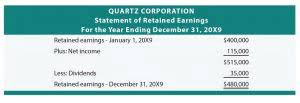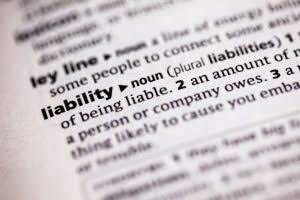
A company that generates positive cash flow from financing activities is in good financial health. The cash flow statement is one of the three financial statements that businesses use to track and report their financial performance. It lists all of the cash that has come into and out of the business over a period of time, allowing the business owner to easily take a snapshot of their organization’s financial health. A financing activity refers to issuing bonds, repurchasing bonds, selling stock, or stock buybacks, where the cash flows between a company and its owners and creditors. Investing would include cash activities on long-term assets, such as equipment and facilities.

Dividends and distributions
Many of the boxes appear regularly in most reports, like one that focuses on employment and earnings for different demographic groups. SmartAsset Advisors, LLC (“SmartAsset”), a wholly owned subsidiary of Financial Insight Technology, is registered with the U.S. The main distinction to make is between advisors who adhere to the fiduciary standard and those that follow the suitability standard.
What Cash Flow From Financing Activities Tells You About Financial Health
Larger corporations with dedicated financial analysts do monitor regularly. Cash flows from financial activities are analyzed more frequently around strategic events like mergers and acquisitions. It is imperative to monitor your cash burn rate (cash you are burning every month) and runway (how long you can stay alive at this burn rate). It would help to have a solid plan and targets to return to positive cash flow. A distribution is an additional cash payment made to investors by smaller corporations. It’s important to consider all of a company’s financial metrics when making investment decisions.

What’s the Difference Between Debt and Equity Financing?
Another $4,000 came from the sale of capital equipment, and the final $35,000 was a cash injection from a bank loan (debt financing). On the other hand, if a company turns toward debt options predominantly, it means that such a company is saddled with fixed obligations. Such obligations might be compounded if there’s an increase in interest rates. An ideal capital structure would demonstrate a balance that minimizes the cost of capital. One shall also note which option a company frequently chooses for financing. If a company overtly relies on stocks for raising capital, it implies value dilution for investors, which results in a share price fall.
- Marcum LLP is a national accounting and advisory services firm dedicated to helping entrepreneurial, middle-market companies and high net worth individuals achieve their goals.
- Additionally, analysts can use the CFF to help predict a company’s future cash needs.
- Owners get information to strategize for the future, investors use this to decide if it is an attractive investment opportunity, and creditors determine whether it is a good idea to loan the company.
- Let’s say that a company’s balance sheet has long-term liabilities of $10 million at the beginning of the year and $11 million at the end of the year.
- You’ll repay the borrowed amount over the length of the term and, if you make timely payments and don’t default, come out on the other side with no debt attached to your name.
Capital financing options
The real value comes from diving into the details and analyzing these figures in the context of the wider picture, and creating strategies for continuous improvement of your company’s financial position. Until you actually look at one, you see that the statement is split up into sections, each providing finance professionals with a little more insight cash flow from financing activities into the health and profitability of a business. Get instant access to video lessons taught by experienced investment bankers. Learn financial statement modeling, DCF, M&A, LBO, Comps and Excel shortcuts. Here, one should note that CFF calculation does not account for changes in retained earnings since it does not correlate to financing activities.
Cash flows from financing activities include the various transactions that affect the capital structure of your business. This will allow you to see your cash equivalents and other key components. Your cash flow from operating activities is the cash you generate from providing your product or service minus the amount you’ve paid for expenses and other business expenditures. Small businesses won’t have stock or dividend transactions on their cash flow statement, so they’re mostly concerned with securing and repaying business loans they’ve secured.
Everything You Need To Master Financial Modeling
While the organization may deny any application, just about any financial professional will be eligible. Concerns about inflation, changing tax laws and the need to plan early for retirement are more prevalent than ever before. Not that long ago, most CPAs did accounting and tax services, plain and simple. We’re in the business of helping you get back to business; Speak with our team today and see how National Business Capital can help you set your plans into motion.
What Are the Most Common Debt Financing Options?
- This scenario is expected for a period when your business is new, or it is going through a growth and expansion phase.
- One common misconception is that interest expense — since it is related to debt financing — appears in the cash from financing section.
- While the organization may deny any application, just about any financial professional will be eligible.
- In some cases, special assessments need to be made to get a better view of balance sheet data.
- “Cash is King” is an age-old saying that holds even today for any business.
- By contrast, debt and equity issuances are shown as positive inflows of cash, since the company is raising capital (i.e. cash proceeds).
Additionally, analysts can use the CFF to help predict a company’s future cash needs. You can calculate the cash flow from financing activities by looking at a company’s balance sheet. To do this, take the beginning and ending balances of long-term liabilities and short-term liabilities. As well as the change in equity (issuance of new equity minus repurchase of equity), and subtract dividends paid. The cash flow from financing activities (CFF) is part of a company’s cash flow statement.
Cash Flow From Investing Activities Importance
- Then, we check out cash flow from investing activities, which includes things like the purchase and sale of capital equipment.
- If you’re looking for a financial advisor, understanding just what that person’s credentials really mean can make the choice easier.
- It is critical to consider this component’s inference within the context of a company’s net income.
- And if you have any injections of cash from outside sources, it needs to be recorded just like outgoing cash.
- These days, it’s not uncommon to see a long string of acronyms following the name of an accountant or business advisor.
If you’d rather skip the line and streamline your search for financing, look no further than National Business Capital, the market leader in $100k to $5m transactions. It requires you to take yourself out of the day-to-day and focus on the finer details, which might not be what you want to do at the end of a long day. This content is presented “as is,” and is not intended to provide tax, legal or financial advice. This is a great thing for cash on hand, as it may allow the business to expand, or stay alive during early-stage product development. This is of particular concern if interest rates are expected to rise, as the cost of servicing those debts will increase in conjunction, which could land the business in hot water. Cash flow analysis is also one of the best measures of business performance.
What Is Cash Flow from Financing Activities?
Issuance of stock options to employees is an example of a financing activity that does not show up in cash flow from financing activities. The investors, creditors, and owners actively analyze this section of the cash flow statement. Owners get information to strategize for the future, investors use this to decide if it is an attractive investment opportunity, and creditors determine whether it is a good idea to loan the company. The cash flow statement is a reliable financial performance indicator to assess your business’s financial health and stability. Negative cash flow means that your business is spending more money than it is earning.

